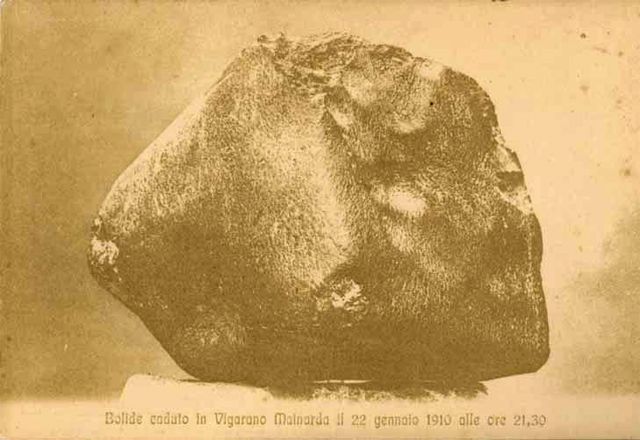Vigarano
Vigarano is a (CV3) carbonaceous chondrite that fell the evening of January 22, 1910, near Ferrara, Italy. Vigarano is the type specimen for the CV group meteorites which are, according to The Meteoritical Society, "distinguished by large (mm-sized) chondrules, many of which are surrounded by igneous rims, large refractory inclusions and abundant matrix (40 vol%); CV chondrites may be divided into oxidized and reduced subgroups."
The history of the Vigarano meteorite is particularly interesting. While 16 kg of material were recovered in 1910 (the first mass immediately after impact, and the second the following month), research undertaken by Dr. Trevisani in recent years, has unearthed an additional 6.9 kg in a private collection, as well as a plethora of Vigarano imposters. Some of these imposters were even identified in museum collections!

The meteorite's fall was widely publicized, and the main mass was featured on a tourism postcard in 1911.
Learn about the history of the Vigarano meteorite and see photos here!
Read about ASU Center for Meteorite Studies research on Vigarano here!